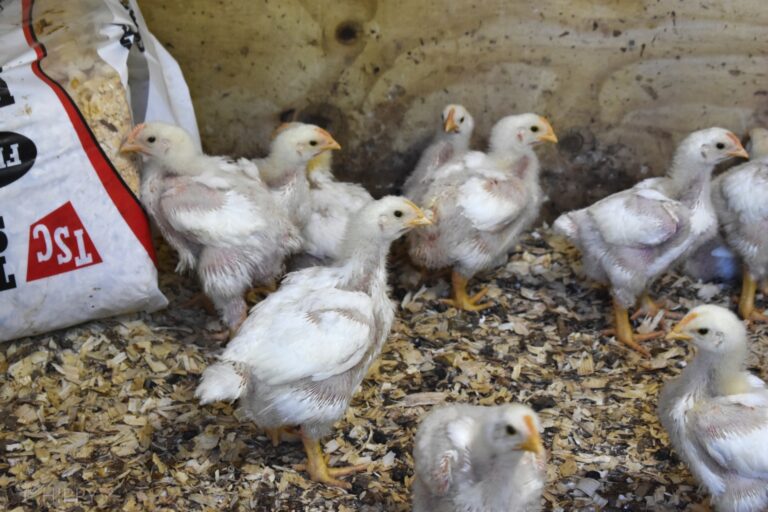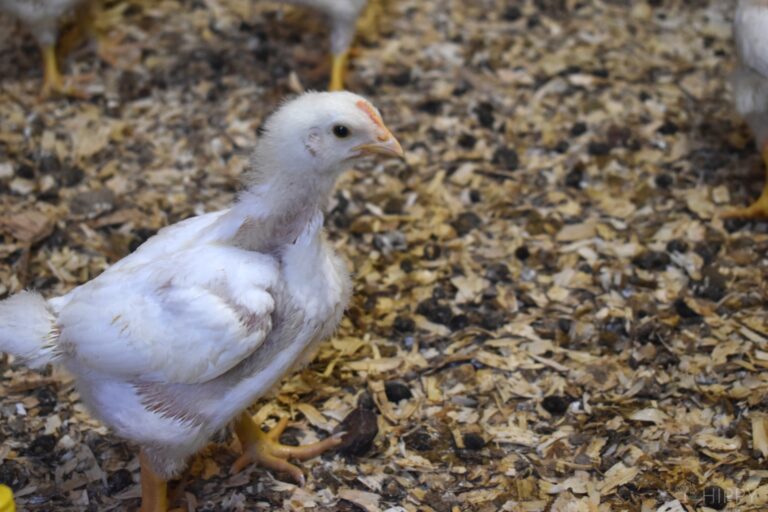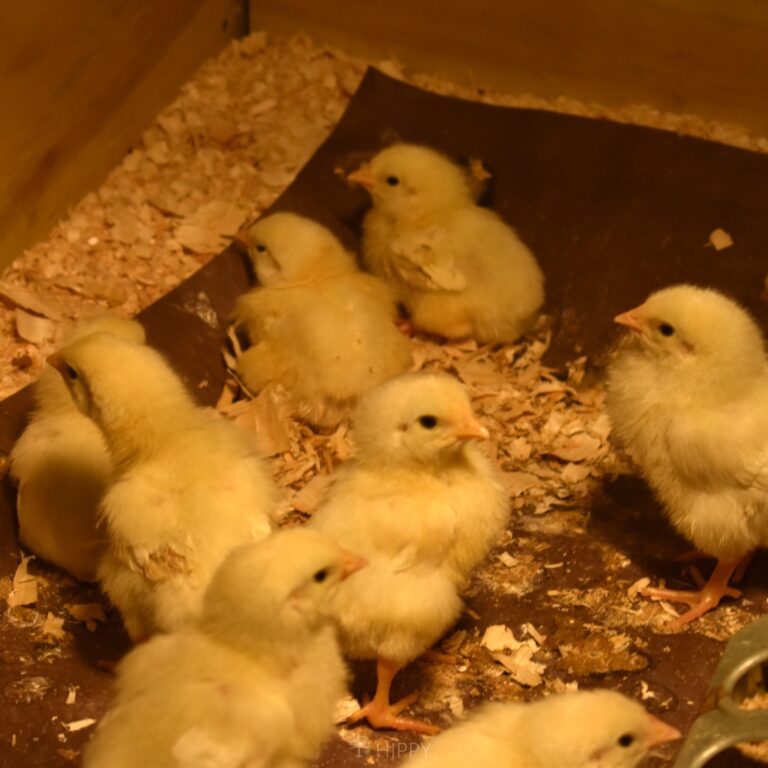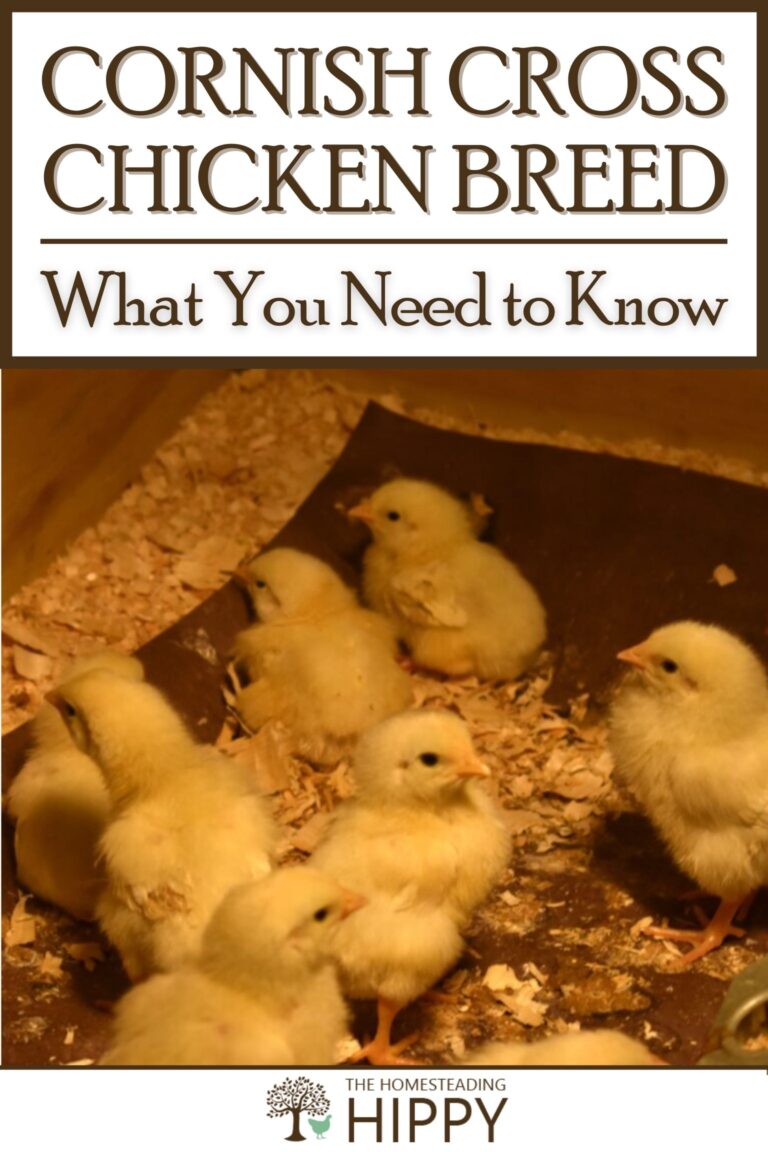If you’re planning on raising chickens, for whatever purpose, you’ll need to know your way around all of the many breeds that are available today.
Each breed has its own unique characteristics, advantages, and disadvantages, and choosing a breed that is ill-suited for your purposes is only going to cause headaches.

Today, we will be looking at the ubiquitous and increasingly controversial Cornish Cross. Pretty much all of the chicken sold commercially today comes from these specially bred birds, because they grow big and they grow very quickly.
However, they are a terrible choice for literally any other purpose and tend to have catastrophic health problems if not harvested early in life. You can learn more about this breed in the rest of this article.
Table of Contents
Cornish Cross Quick Facts
- Purpose: Meat. Cornish Crosses are totally unsuited for egg laying or any other purpose.
- Plumage: White, sometimes with black necks or speckles depending on line.
- Eggs Laid Year on Average: N/A. Cornish Crosses are rarely kept alive past 8-10 weeks. Ones that are experience terrible health problems.
- Egg Color: White, off-white
- Broodiness: N/A
- Average Weight: 8-10 pounds (typical harvest weight)
- Average Height: 13-14”
- Lifespan: Short. Almost invariably harvested for meat at only 2 months old, but ones kept alive past this time usually experience terrible health problems.
- Temperament: Lazy and docile. Often listless when they get too big.

What Color and Pattern are Cornish Cross Chickens?
Cornish Crosses typically have white feathers, though sometimes you’ll see them with black necks or speckles depending on the specific line.
In any case, this is not a chicken that is expected to have any sort of distinct patterns or colors according to breed standards as with heritage or show chickens.
How Big are Cornish Crosses?
This is a question with two answers. The first answer concerns how big they typically get when they are harvested, which is still at quite a young age.
The second part of the answer concerns how big they can get if they are not harvested for their meat.
As soon as they turn 8 weeks old, or perhaps just a little bit older, Cornish Crosses are usually slaughtered.
At this time they will typically weigh between 8 and 10 pounds, though sometimes they will weigh a little bit more if they are allowed to get bigger.
It should be noted now that Cornish Crosses grow extremely quickly and pack on tons of muscle as they were designed and bred to do so.
If for whatever reason, a Cornish Cross is not slaughtered at around 8 weeks of age it could easily go beyond 10 pounds, particularly if given copious access to food.
This, however, comes with severe consequences for the poor birds as their health problems will typically increase in direct proportion to their weight. More on that in a little while.
Cornish Cross Essential Characteristics
What exactly is a Cornish Cross? I’ll put it to you this way: think of the last meal you had that had chicken in it. In all certainty, that chicken came from a Cornish Cross.
In fact, the past dozen meals you had with chicken in it probably had meat supplied by a Cornish Cross.
It is far from out of the question that the vast majority of chicken you’ve ever had in your life has come from these specially bred birds.
It was not always this way: chicken used to be significantly more expensive and not as easy to come by as it is today, but it was the introduction of the Cornish Cross that single-handedly revolutionized the commercial market on chicken.
This started all the way back around 1950 in the aftermath of the chicken of tomorrow contest that was initiated by the USDA.
The direct consequence of this contest was the crossbreeding of a Red Cornish and a White Plymouth Rock, two already highly efficient and fast-growing birds.
The result was the Cornish Cross, or rather the ancestor of the Cornish Cross we know today.
The modern Cornish Cross is not a single breed of bird, but rather a category that encompasses several strains, or sub-breeds if you prefer.
Some are bred to be a little bit bigger, some are specially selected for extra large breasts and others are more well-rounded, but all of these birds are very far, physically and in temperament, from their ancient jungle fowl ancestors.
Extremely fast-growing, heavily built in a bulky way, docile, and not particularly intelligent, these birds are designed entirely for raising to slaughter and yielding as much meat as conceivably possible.
What are Cornish Cross Chickens Raised For?
Meat, and meat alone. Cornish Crosses are not raised for show, they are not raised for eggs and they make terrible companion birds or pets.
That’s it. If you aren’t raising them yourself for meat you should definitely look at a different breed.

Are Cornish Cross Chickens Good Layers?
No. Setting aside for a moment the fact that Cornish Cross hens are invariably slaughtered before they’re even old enough to start laying, they aren’t good layers even if kept alive.
First, they simply are not bred for it. Second, it rarely fails that they’ll be plagued with health problems once they reach laying age, and the mortality rate of all adult chickens over a couple of months old increases dramatically, and keeps on increasing.
Precious few people even try, and those that do try to raise or rescue Cornish Crosses and utilize them as egg layers usually report disaster down the line.
What Color Eggs Do Cornish Crosses Typically Lay?
Assuming they survive to be old enough to start laying eggs, and then actually lay the eggs, Cornish Crosses will lay a white or off-white egg.
When Do Cornish Crosses Start Laying?
Again, nominally, you can expect a Cornish Cross to start laying eggs around at 3 1/2 or 4 months of age, perhaps a bit longer.
What Do Cornish Cross Chickens Eat?
Cornish Crosses are fairly unique when compared against more traditional heritage breeds because they subsist almost entirely on a diet of high-protein chicken feed, commonly known as “broiler feed”.
It is known as broiler feed because it is feed that is fed to broiler chickens, e.g. Cornish Crosses that are raised for quick slaughter.
High-protein feed is extremely important for Cornish Crosses because without it they are not going to put on weight quickly enough to be slaughtered before the inevitable onset of health problems as they grow older month by month.
And that’s pretty much all they eat. They’ll eat a ton of food, drink a ton of water and then lounge around waiting to be fed again.
Cornish Crosses don’t have much instinct for foraging or hunting down bugs and worms like other chickens. That has pretty much been bred out of them also.
Even if you do give them room to roam around a little bit, which they will probably appreciate, don’t expect them to have much success in feeding themselves.
Something else to keep in mind is that Cornish Crosses can and will gorge themselves on available feed to the point of suicide, so carefully metering out the food they are allowed on their meal schedule is critical to keep them alive.
You cannot simply fill up a trough or any other feeder and allow them to go to town whenever they want to: they will eat themselves to death.
How Long Do Cornish Cross Chickens Typically Live?
Cornish Crosses do not live very long, one way or the other. As mentioned throughout this article, most are slaughtered right around 8 weeks of age, or perhaps shortly thereafter.
The birds that do live beyond this might not live a whole year: the development of chronic, serious health problems is a known quantity with this breed, and that is part of the reason they are slaughtered so early.
Are Cornish Crosses Prone to Particular Health Issues?
Yes, many. As a direct consequence of mankind’s meddling, Cornish Crosses are veritable freaks of nature compared to other heritage breeds and certainly when compared to their red jungle fowl ancestors.
They grow extremely quickly, packing on mass in the form of muscle the entire time.
Accordingly, most of these birds have trouble moving around, and will routinely develop problems with their feet, legs, skeleton, and internal organs.
These birds, quite literally, can get so big and heavy that they are incapable of standing.
There are muscles, again selected to be oversized for meat production, can hinder their movements and weigh them down to a degree that they cannot move or barely breathe. Heart and lung complications are common.
It is, genuinely, pretty grotesque what happens to these birds if they are allowed to live.
Another thing to consider is that their extremely high protein diet changes the nature of their droppings, too.
Instead of the compact, firm pellets that other healthy breeds typically deposit, Cornish Crosses are known (and infamous) for their substantial, loose bowel movements that absolutely reek.
This is something you’ll need to be prepared to clean up on a daily or twice daily basis, and considering most of the birds aren’t particularly mobile, they will happily sit or walk through their own feces and develop sores, bumblefoot,+ and other infections.
Are Cornish Cross Chickens Friendly?
Cornish Cross chickens are reasonably friendly, but not the way you are thinking. These birds pretty much only care about one thing, and that is food.
So long as they have food to eat they are content to sit around or, if they can walk, just walk around lazily waiting to be fed.
Compared to other breeds of chickens their intelligence, however, is woefully low and they do not react to each other or to people the same way that other birds do most of the time.
Do Cornish Crosses Get Along with Other Chickens?
Typically Cornish Crosses get along with other Cornish Crosses just fine. The only thing that motivates them is food.
At the industrial scale, Cornish Crosses are rarely if ever commingled with other breeds of chicken, and they are so rarely seen on smaller farms or in backyard flocks there isn’t much information to go around concerning how they interact with other breeds.
It should be noted, though, that the physical limitations and typical health problems these birds endure mean they are not going to be able to get away from any other chickens that are harassing them, and they can hardly defend themselves.
If, for whatever reason, you plan on incorporating Cornish Crosses into a mixed breed flock you should really keep an eye on them to prevent issues.
What Kind of Chicken Owner Are Cornish Crosses Right For?
Cornish Crosses are suited only for one kind of chicken owner: Those that want to raise as much high-quality meat as quickly as humanly possible. That is all.
Cornish Crosses are pitiful layers, they aren’t showbirds and they don’t make good pets or entertaining additions to an existing flock.
You can make a great argument that keeping a Cornish Cross alive longer than is absolutely necessary is animal cruelty; they face so many health problems later in life.
If you were thinking of doing anything with the Cornish Cross aside from raising it and slaughtering it the moment it has made weight, choose another breed of chicken.
There are dozens and dozens of heritage breeds out there the conserve every purpose, including all purposes if you choose: From meat production to egg laying, showing to being a great and long-lived pet.
The Cornish Cross, on the other hand, is bred for a singular purpose.
FAQ
No. By sheer numbers, the Cornish Cross is certainly the most plentiful chicken by an astronomical margin.
No. Certain varieties of the Cornish, not to be confused with the Cornish Cross, are autosexing but the Cornish Cross strains we have today are not.

Tom has built and remodeled homes, generated his own electricity, grown his own food and more, all in quest of remaining as independent of society as possible. Now he shares his experiences and hard-earned lessons with readers around the country.
Find out more about the team here.
